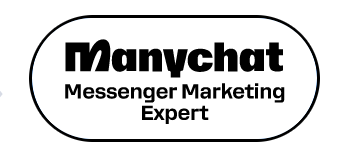
You have a product idea worth one million dollars, and I believe you will successfully start your business.
Excellent! But it can also be overwhelming.
There are hundreds of factors in starting a large and small business. Before creating the product itself, you need to lay the foundation. Then, once you get the product in your hands, you also need to figure out how to put it in the hands of potential customers.
Fortunately, you don't have to do it alone.
In this guide, we will share exactly how to launch a product-starting with the initial idea, providing the right way to generate profit, and answering all the questions that accompany how to start an e-commerce business.
1. What solution do you provide?
Every great product is created in the painful struggle of the founders (or people they have met).
By footwear brandTOMSTake for example. Their shoes were made when the founder saw people trying to afford shoes. They decided to donate a pair of TOMS shoes to those in need. This concept became their entire mission and marketing strategy, which is the problem they solved by launching their own business ideas.
The first step in launching a product as a business owner is to consider the problem you want to solve with a new product idea. You can consider the following points to do this:
- The reason you created the product
- The type of person you sell it to
Let us put it into practice and say that you already have an idea for a new fitness machine. Treadmill-style products were created because you live in a small house and it is impossible to install a life-size treadmill in it.
You are selling products to other people who have small houses. This is your target audience. Your product is designed to be cheap and portable. Therefore, the problem you want to solve is a piece of fitness equipment that is small enough (and cheap), even if people do not have a designated fitness room, it is enough for people to use at home.
2. Consider logistics
You already have your own business philosophy and know what problems your new product can solve.
Next, consider how you will actually produce, sell, and sell the product to potential customers. Answer the following questions:
- How will you create the product? Will you manufacture or outsource?
- Where will you purchase materials?
- How will you sell products (online stores, exhibitions, etc.)?
- How will you advertise and promote?
The answer is what you want to include in the business model. That's because they help ensure that it is actually possible to sell your product and have an execution plan. If you want to know if there is any platform that can help e-commerce business like you, then Shopify is your best choice. Curious about how to use Shopify and how it will benefit your company? Shopify is a top commerce platform that can be used by businesses of all sizes to create some of the best e-commerce websites to help you make more informed decisions about the future of your brand.
After you launch your first product, this can help preventGrowing troubles. You have considered all the issues between creating and delivering the product. With all the plans, you will not run into the risk of logistical problems.
3. Create a product prototype
In the previous step, you have developed an action plan for product creation.
The important thing is: don't settle for the first version to be created. You may choose one supplier and another manufacturer, but your first choice may always be the best. Materials from different suppliers, and test different manufacturers. Which combination results in the highest quality final product?
After finding the best combination, please continue to make different prototypes of the product.
You should consider the competition at this stage, focusing on the features your customers like most.
Such asMentionorOf AwarioSocial listening toolmeetingFind mentions of competitors. You can find a tweet saying "I love [competitors], but...". Use those "buts" and think about how to add these features to your ideas and do better than the competition.
You can rob some of their dissatisfied customers by offering them what they are missing.
4. Start to understand your ideal customer
We have briefly talked about the fact that you should know the solutions provided. Part of this involves understanding your target audience.
At this stage, you need to take further steps to establish buyersRoles -Describe the customer profile of the person you sell the product to. It includes demographic information such as:
- age
- gender
- position
However, customer profiles will also dig deeper into their online and buying habits, including their preferred online options for payment gateways.
See how much they usually spend on products like yours and which channels they are using. You may find that the ideal loyal customer is a 25-50 year old woman who uses Facebook, who usually spends $50 a year on your sales.
Such as Slumber Yard Matthew Ross SaidThis kind of marketing strategy is the golden powder when promoting products. "For someone launching a new product, the best business secret is to focus on a specific niche, market segment or audience group that you want to penetrate."
"I think many entrepreneurs are too focused on trying to capture the entire market. Instead, it is usually easier and more fruitful to focus first on the underserved or underserved market segments of the target market. This way, your product will have a better chance to stand out and Get attractive."
"For example, if you want to launch a new mattress, please target specific market segments, such as side sleepers, couples, heavy objects, etc."
Ross concluded: "Branding and marketing around this theme make it stand out from the crowd. Once you find success, you can always focus on other market segments in the future."
5. Test, test...and test again
At this point, you should have completed the prototype of the product and have a deep understanding of who will buy the product. Next, you need to get real feedback about the prototype from these people.
Our goal is to use similar questionscollectOf people similar to the one you are going to sellFeedback:
- What do they like/dislike?
- What is their favorite feature?
- Are there any problems with the product?
- How much are they willing to pay for this?
You will be able to adjust your product to make it ready. If you find that people like a feature, treat it as a unique selling point. However, if they don’t like the other one, please consider whether you can make it better. If it is not, delete it completely.
Customer feedback also provides an excellent way to collect some social certificates. Your survey will return content such as "This product does help [your solution]!".
Research shows that there are92% of peopleWill seek this kind of social proof before purchasing the product.
This is whyWit and Folly Melissa Teng said: "My best advice is to test their products with real people as soon as possible. By bringing at least one physical or digital prototype (if it is a digital product) to the market as soon as possible, you can obtain valuable information. Information will improve your product."
"If you are a perfectionist and wait until every detail of the product gets what you want, you may have designed the product for yourself and your customers. In other words, try to find a way to create a minimum viable product and Put it on the market to gather feedback."
6. Create a brand message
People need5 to 7 brand impressionsTo remember your brand.
The brand messaging framework clearly lists the basic elements of a brand. It can help you build a logo around the product you are creating, rather than just being known for the product.
Your brand messaging framework should show who and how you do it.
Take the dollar shaving club as an example. Their product was created after founders and business owners wanted to order packages of affordable razors. Their brand message shows this and attracts the attention of ideal buyers with the same problems:
The brand message framework should be the guiding point for any sales or marketing activities that you will carry out for your chosen target audience to get the product off the ground. This helps yourProduct Positioning-Define the "things" that your brand will be known for.
BrandLoom Avinash Chandra sums it up perfectly: “Before you launch your brand, your brand positioning is very important. This is because people will look for your USP in your story-today’s customers are buying from related brands. Commodity, rather than simply picking anything."
"After you have completed your branding, you can create a pre-launch buzzer to target your target audience. If you can interact with your audience from the beginning, you have a greater chance of success."
7. Develop a listing strategy
Congratulations! At this stage of starting a new business, you will have everything ready. This is the exciting part: creating aMarket entry strategy, As a manual to push your product to the world.
This listing strategy should be your blueprint, which includes:
- The marketing channels you will use (Messenger marketing, Email, advertising, etc.)
- The type of content you will share and how to create it
- The tool you are using
- Your advertising budget and spending budget
WikiLawn Dan Bailey said: "Ideally, you want to find someone who may need it and provide something for free.Promote your product. "
"This may sound counterintuitive, but unless you sell high-value products in a competitive situation, you need a way to get people to pay attention to you."
Bailey added: "In the past, I used Facebook and Google Ads to get people to free or heavily discounted landing pages. In exchange, they provided their email address and you started trying to make them aware of this need. And how to achieve it."
Remember: the ultimate goal is sales. Your market entry strategy is how to show potential customers that your product exists.
Ready to release your first product?
The process of starting a new business and launching your first product can be daunting. However, through this seven-step process, you will be sure to release the best product-the product your target audience actually wants to buy.
Remember to constantly test your ideas and create a small group of customers to get feedback. For any new founder and business owner, this is golden dust. It can help you create the best products.
Source: https://manychat.com/blog/
